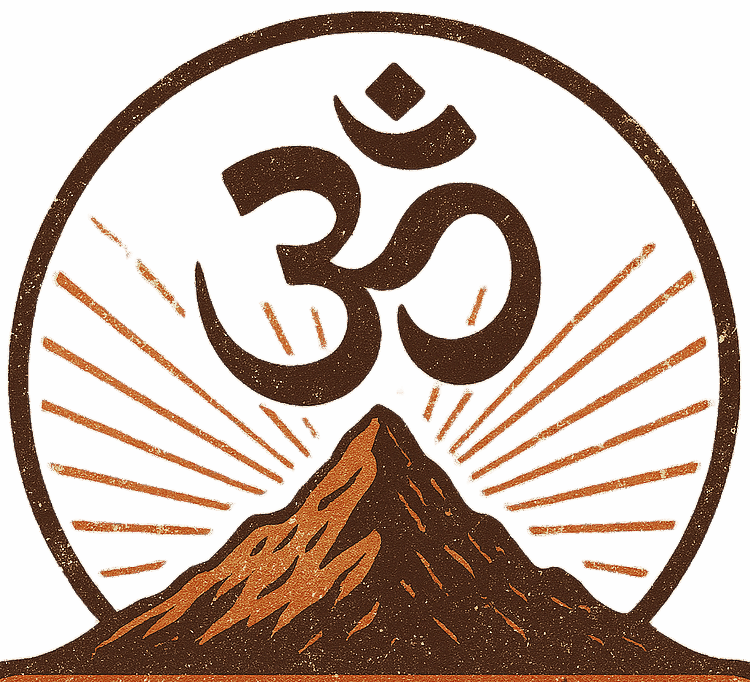It has been my hope in writing this simplest and briefest of sketches to present the reader with the most essential starting point for any spiritual pursuit. I will be skimming over vast amounts of information – entire religions’ worth of intricacies, but, sometimes simplicity is more conducive to understanding than lengthy expositions. This is a navigational aid; I have written it from a top-down perspective, but the work itself is bottom up. I can give you an idea of the path, but to go anywhere you will actually have to walk it. Words and thoughts are not enough, and in the end where you go is up to you:
To begin, there is infinity or ultimate reality which is without limit and beyond description; any attempt to define it in a positive way would be an attempt to apply limits, and therefore it would fail.
Still, there are some things that can be said about it. Infinity possesses two characteristics: absoluteness and infinitude. Absoluteness is the kernel of “is-ness”, the “yes”, the “1” that underpins all of reality. Infinitude is the extension of this absoluteness into a range of possibilities that is again without limit.
Within this range there is an indefinitely large set of all the possibilities of existence. We will call this “Being.” Being specifically possesses the characteristics of essence (of which absoluteness is its principle) and substance (of which infinitude is its principle). Sometimes these are called purusha and prakriti, or the masculine and feminine principles.
The first effect of essence and substance interacting with one another is “spirit” or “universal consciousness”. This is what happens when Being recognizes itself. It is the first instance, or illusion, of subject/object duality. Conventionally this effect is known as “God” or “Logos”, “Brahman” etc.
From here there are two additional causal arrangements: Because God is universal consciousness, He is also the supreme principle of and contains the set of all conditioned consciousness (that is, consciousness that has limits, boundaries). This can be thought of as the set of all individual “souls”. Furthermore God, as the essence of all things, looks upon Being and gives form to substance according to the possibilities of existence. This is the act of Creation. The former is the development or particularization of essence and the latter is the development or particularization of substance. In all cases, however, the distinction is again ultimately illusory because it is all just a conditioning of the same higher principle – in the same way that a wave might be perceived as distinct from the ocean, and yet it is really just a part and extension of it and made from the same stuff.
This then is the nature our truest selves and also of the universe that we inhabit. It is important to understand that in the causal hierarchy that has been discussed, cause and effect are immanent to one another; they are not sequential or separated by things like space and time. There is no beginning or end. Rather, they have happened/are always happening in an eternal “now-ever.” One could say that the cause contains the effect; the cause is its principle; the cause and effect are of the same essence but the cause is larger whereas the effect is conditioned and limited.
Consequently, the individual soul or consciousness exists outside of the cycle of life and death. Some additional things that we can say here are that from the discussion above, it is evident that there is a close relationship between consciousness, subjectivity, attention, will and power, all of which inhere from God. Consciousness and subject/object duality necessitate attention directed from the subject to the object. Essence looks upon substance. The will wishes to give form to substance by selecting from and actualizing a range of possibilities, and power grants the ability to do this.
The obvious question becomes, if this is true then why are we not typically aware of this? It is similar to how we are not typically aware that we are breathing, even though we are always doing it. As the soul looks upon God’s Creation, the possibility exists for it to become so engrossed in what it is looking at that it forgets itself. One might think of becoming lost in a book or a painting or a video game. At this point the soul no longer identifies with itself but rather with some “character” that is not rooted in essence but rather in substance, and we call this “ego.” Ego is what lives and dies, and what experiences reality as a spatial/temporal arrangement of sequential events. You are here.
Everything else about the human condition follows from this. Those of us who live human lives have, by definition, fallen into an illusion about who and where we are. We enjoy the phenomena of our senses, and yet also from thence arises our confusion, conflict and suffering.
Every moment in our lives we should be grounded in this understanding, but again it is our nature to be forgetful. We have forgotten that we have forgotten, and this is why the world is the way it is. For those of us who remember – even if only sometimes, and even if only by chance – there exists the possibility to find ourselves, and eventually to find God. And this is the real work of our lives.

